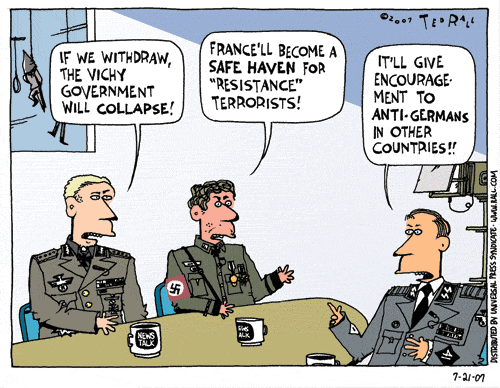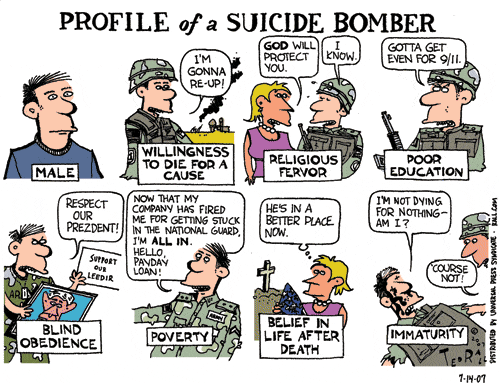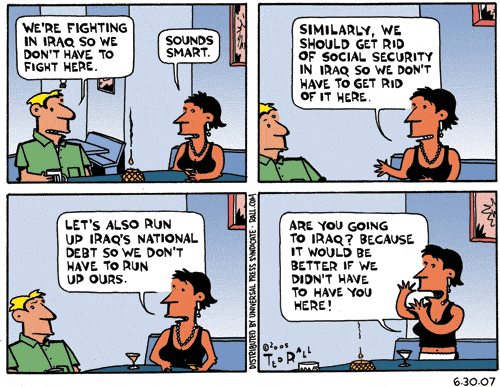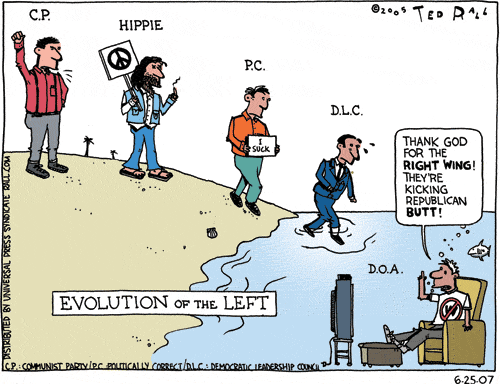
July 1962 was a tense time for the United States and the entire world, a period of perilous confrontation between the West and Communist nations. The Soviet Union declared that it would defend China against any attacker. Americans had begun to die in Vietnam. And in tests that month, the U.S. detonated a series of advanced nuclear bombs.
On July 26 an official of the FBI's Domestic Intelligence Division -- the counterespionage department -- filed a cryptic note at headquarters in Washington based on reports from agents in Mexico City: "Info received from informants [names deleted] advised Marilyn Monroe attended a luncheon at the residence of Peter Lawford with President Kennedy. Informants characterized Monroe's views as positively and concisely leftist."This strange document and others filed under Marilyn Monroe -- Security Matter -- C (the "C" stood for Communist) were to be withheld by the U.S. government for more than 40 years. Behind them lies a disquieting story that began five months earlier in an exotic foreign city.
In February, lounging in a Mexico City hotel suite, the world's most famous movie star had sipped champagne with a scion of one of America's most illustrious families. Marilyn Monroe was getting acquainted with Frederick Vanderbilt Field, great-great-grandson of the railroad tycoon Cornelius Vanderbilt. Monroe had flown south to buy paintings and furniture for her Mexican-style house in California, and Field, who had lived in Mexico for years, was on hand to show her around. An ordinary meeting of the rich and famous? Not so, we now know, as far as the FBI was concerned.
Monroe, as the Bureau already knew, had for some time been having a dalliance with President John F. Kennedy. Three weeks earlier, at a dinner party in Los Angeles, she had also had a first tête-à-tête with his brother Robert, the Attorney General. It was a scenario filled with potential risk, for the woman involved with two of the nation's leaders was drinking too much, abusing prescription drugs and seeing a psychiatrist almost daily.
Her friend Field, meanwhile, was no ordinary plutocrat. He was an unrepentant supporter of communism and was being watched constantly by U.S. agents. Monroe's association with Field, coupled with her involvement with the Kennedys, made her a security risk.
The FBI's July 26 document, made available this year, was written 10 days before Monroe's death.
Back in 1985, when my biography of Monroe was published, I suspected that the authorities had not told the full truth about the actress's final months. Freedom of Information Act requests for documents the FBI might have on the actress turned up the "105" file on her, a designation applied to "foreign intelligence matters." Most of that file, however, was withheld under "B1," an exemption covering matters of national security.
Three years earlier, the office of the Los Angeles County District Attorney had conducted a review of the circumstances of Monroe's death, a probe prompted by continuing public controversy and a claim by a coroner's aide that he had been coerced into signing her death certificate. The D.A.'s investigators, I learned, had been told by the FBI that there was certain material they could not see -- material concerning Monroe's visit to Mexico.
I brought suit against the FBI to release its 105 file, a move that prised out two documents that were almost completely blacked out by the censor's pen. To release the full contents, FBI attorneys asserted, would violate the request of another agency -- almost certainly the CIA -- and compromise sources. Though I moved on to other assignments, I did not give up on the 105 file. Each year, I had my lawyer press the FBI to release the withheld documents.
This past year, the FBI finally provided me with more than 100 pages, this time with far less censorship. Soon after, I obtained some 500 pages from the D.A.'s 1982 case review. Together, the documents throw new light on Monroe's death, one of the most enduring mysteries of the 20th century.

Suicide or Murder?
Not long before she died, a D.A.'s report shows, Monroe discussed suicide with an actress friend, Jeanne Carmen. Were she ever to kill herself, she said, she "would dress in a white nightgown, take an overdose of pills and go to bed. The sheets and spread would be white and she would have her hair and makeup done. A friend would be informed of the suicide to make sure that after her death she was neatly positioned and the bedroom was in order."
A shabbier scene greeted police summoned to Monroe's home in Los Angeles in the early hours of August 5, 1962. The star had evidently been dead for some time. She was naked, in a semi-fetal position, her face unmadeup, her hair a mess, in a disordered room. There were pill bottles on the bedside table, and the autopsy report was to give the cause of death as "acute barbiturate poisoning due to ingestion of overdose." In the space for "Mode of Death," autopsy surgeon Dr. Thomas Noguchi circled "Suicide," adding the word "probable." That was the verdict coroner Theodore Curphey announced at a press conference 12 days later, saying he thought the overdose had been "self-administered," the pills swallowed "in one gulp."
Fans thought the suicide finding a slur on Marilyn's character, that her death had been a tragic accident. Others suspected the overdose had been administered by someone else, perhaps by injection -- that their idol had been killed. The D.A.'s 1982 review opened with a formal Request for Investigation of the possible "murder" of "victim Marilyn Monroe" by a person or persons unknown. A mere four months later, though, the probe was closed down. A report was issued stating that there was "no credible evidence supporting a murder theory." There was a possibility that the death had been accidental, but suicide was more likely.
A senior forensic pathologist consulted by the D.A.'s office took the view that the original medical findings on Monroe were accurate. In an interview this year, though, Dr. Steven Karch, a retired assistant medical examiner for the city of San Francisco, pointed out what he sees as troubling flaws in the forensic evidence. Monroe's internist, Dr. Hyman Engelberg, told the D.A.'s investigators that he had prescribed only one of the medications that killed her. If so, asks Karch, where did the other medications come from? The records are contradictory on how the police and coroner's staff handled the many drugs found at the house. A coroner's document indicates that nothing was removed from the scene. The bedside table was still littered with pill bottles the following day; Monroe's business manager, Inez Melson, the first person allowed access after the police left, told me she simply threw them away. Why, then, do other documents indicate that eight medication containers were analyzed at the coroner's laboratory?
Most disquieting is the fate of specimens taken from Monroe's body during the autopsy. When Dr. Noguchi asked the head toxicologist to test tissue samples, he told the D.A.'s staff years later, he was told they had already been "destroyed." Why? Toxicologist Dr. Raymond Abernethy refused to comment when I asked him for an explanation. "The last thing in the world you do is dispose of tissue," Dr. Karch says today. "To throw away the tissue is, I think, astonishingly damning. There's no justification, because you never know when you might want to go back and look again."
 Given such irregularities, Karch adds, "you can't rule out the possibility that Marilyn Monroe was murdered. If I had my druthers, I would classify this death as 'undetermined causes.' To me -- and I'm not by nature a conspiracy theorist -- the circumstances of her death remain a mystery."
Given such irregularities, Karch adds, "you can't rule out the possibility that Marilyn Monroe was murdered. If I had my druthers, I would classify this death as 'undetermined causes.' To me -- and I'm not by nature a conspiracy theorist -- the circumstances of her death remain a mystery."
The only other person present in Monroe's house when she died, supposedly, was Eunice Murray, her housekeeper. Questioned by the D.A.'s staff in 1982, Murray said she raised the alarm when -- having woken "in the middle of the night" -- she noticed a telephone cord under Monroe's bedroom door. To avoid being disturbed, the actress usually left the phones outside her room at night, muffled by pillows. The unusual sight of the cord snaking under the door, Murray said, alarmed her enough to call Monroe's psychiatrist.
The psychiatrist, Dr. Ralph Greenson, was dead by 1982, but years earlier he told police that he rushed to the house in response to the housekeeper's call, broke a window to get into Monroe's room, and found her unresponsive. He then phoned her internist, Dr. Engelberg, who hurried to the house. Monroe was "sprawled over the bed," Engelberg told the D.A.'s staff 20 years later. "I took out my stethoscope and listened to make sure her heart wasn't beating ... she was dead. ... I got on the phone and called the police."
The D.A.'s report did not question the credibility of the principal witnesses, did not mention the destruction of forensic specimens, and essentially rubber-stamped the original findings.
Monroe and the Kennedy Brothers
Monroe was drawn to powerful men and keenly interested in politics. She had had an on-off dalliance with John Kennedy since before his election in 1960 and met Robert just before her 1962 Mexico trip, at the Santa Monica home of the brothers' sister Pat and her actor husband Peter Lawford. Knowing Robert would be present, she brought with her a prepared list of political talking points, which they discussed at length. "Bobby was enthralled," recalled guest Joan Braden, and soon Monroe was talking about the "new man in my life." She identified him to one friend only as "the General" because, she coyly explained, he was a prominent public figure. "The General" was how Justice Department insiders spoke of Robert Kennedy. The President's brother and the actress began exchanging phone calls, as Robert's secretary Angie Novello has confirmed. Robert visited Monroe at home in California, according to several sources, including the FBI's former Los Angeles agent-in-charge, Bill Simon, who more than once lent Kennedy his Cadillac convertible to "go see Marilyn."
The D.A.'s review dealt cursorily with stories about Robert and Monroe, pouring scorn on a claim that the Attorney General visited Monroe on the day of her death. "There is no evidence that he was in Los Angeles," a report noted, and newspapers placed him in San Francisco that weekend. In fact, from Friday evening to late Sunday, Kennedy was on a ranch owned by a political supporter 60 miles south of San Francisco. From there, authoritative sources indicate, he indeed made a trip to Los Angeles.
Daryl Gates, who in 1962 was an aide to the Los Angeles police chief -- he went on to head the force himself -- is one such source. "Our records show that [Kennedy] was in Los Angeles," he said this year. Several other senior police officers have said the same. One of the 1982 D.A. investigators told me that John Dickey, a Deputy D.A. in Los Angeles in 1962, said he, too, was told the Attorney General was in Los Angeles on Monroe's last day alive. Ward Wood, a Lawford neighbor, told me he saw Robert Kennedy arrive at the Lawford house that "late afternoon or early evening," by car.
Several people, including Monroe's housekeeper, claimed that at some point that day the President's brother did go to Monroe's home.
We know Monroe had several phone conversations during her final hours. Two of them appear to have been highly significant. A young scriptwriter she met in Mexico, José Bolaños, told me he phoned her sometime after 9 p.m. Monroe told him, he said, "something that will one day shock the whole world." I pressed him, but he would not elaborate.
At about 9:30 p.m. Monroe called Sydney Guilaroff, doyen of Hollywood hairdressers and a confidant of several stars. When I interviewed him for my book, he, like Bolaños, refused to reveal what she had said. Before his death in 1997, however, Guilaroff, in a little-noticed memoir, wrote that Monroe had sounded frantic. She had told him: " ‘Robert Kennedy was here, threatening me, yelling at me … I'm having an affair with him … I had an affair with JFK as well.' She said that Robert Kennedy had journeyed to Los Angeles that afternoon not merely to break off his own affair but to warn Monroe about ever phoning the White House again. ‘It's over,' he had told her. ... Now Marilyn was sobbing on the phone. 'I'm frightened … I know a lot of secrets about what has gone on in Washington. ... Dangerous ones.' "
That the brothers should have wanted to cut off contact with Monroe is no surprise. Dallying with her had been foolhardy from the start. Both were married men in an age when adultery by public figures was even more perilous than it is today. Their folly was compounded by the fact that they apparently talked too much when with Monroe. The 1982 investigators gave some attention to a claim that Monroe kept a journal in which she scribbled notes about her conversations with Robert Kennedy on subjects such as his crusade against the Mafia, his efforts to put Teamster leader Jimmy Hoffa behind bars, and the confrontation with Fidel Castro's Cuba. The D.A.'s report quoted associates saying they had seen no such diary and doubted whether -- in her final months especially -- Monroe was capable of keeping one.
Yet no fewer than seven people, including Monroe's friends and two reporters, are on record as saying the actress did habitually make notes in a diary. One was Jeanne Carmen, the girlfriend with whom Monroe discussed her scenario for suicide. In a memo summarizing an interview with Carmen -- omitted entirely from the 1982 report -- an investigator wrote: "Monroe informed Carmen that Robert Kennedy made numerous business telephone calls from Monroe's residence. Monroe was aware of Kennedy's plans regarding Castro and apparently wrote them in a diary. ... One evening Kennedy, Carmen and Monroe were at Monroe's apartment when Kennedy discovered the diary. He examined it and became upset. He told Monroe she should never put anything in writing and to throw the diary away. Carmen doesn't know what Monroe did with the diary."
Political Entanglements
If the notebook posed a threat, Monroe's loose lips posed an even greater one. Evidence of that comes from the FBI file on Monroe's February 1962 visit to Mexico, the file that neither the D.A. nor I were allowed to see back in the '80s. What we now have of it shows why it was considered sensitive.
Monroe had spent 10 days in Mexico, shopping, socializing and drinking too much. It appeared to be a harmless vacation trip, but on March 6, four days after Monroe got back to Los Angeles, the senior FBI official in Mexico sent Director J. Edgar Hoover a four-page report. Quoting two unnamed people close to her, it said that Monroe had "associated closely with certain members of the American Communist Group in Mexico ... present and/or past members of the Communist Party, U.S.A., and their friends and associates who share a common sympathy for Communism and the Soviet Union … during the course of this visit a mutual infatuation arose between subject [Monroe] and Frederick Vanderbilt Field ... [source's name deleted] said it was obvious that the subject was completely enamored with Field. She said that subject thinks that Field is rich, stable, intellectual, and dependable."
Field, who was married, made no mention of having had a fling with Monroe, either in his published memoir or in interviews with me. He did say his impression was that "sexually, Marilyn did a fair amount of one-night stands." Whether or not he and Monroe were "enamored," it is clear that they took to each other at once. Field had long espoused Communist doctrine and was by his own account "a good, unrebellious comrade."
Monroe seemed to gravitate to left-wingers. Her doctors, psychiatrist Greenson and internist Engelberg, had both been involved with the Communist Party. Her housekeeper's brother-in-law Churchill Murray, who introduced Monroe to diplomats in Mexico, was a member of the group of Communists in exile there. Field deemed Monroe's politics "excellent." She was of the left, odd though it may seem to a public that recalls only the blond bimbo of her movies. Her psychiatrist's daughter, Joan Greenson, told me that Monroe was "passionate about equal rights, rights for blacks, rights for the poor. She identified strongly with the workers." The FBI, a document shows, deemed her to be "very positively and concisely leftist."
While in Mexico, the FBI learned, Monroe chattered about the night she met Robert Kennedy and the long political conversation they had. She told José Bolaños and Field that they had debated U.S. policy on Cuba.
No foreign policy issue was more sensitive than Cuba in early 1962. The Cuban missile crisis was only months away. Robert Kennedy was directing secret American attempts to overthrow Castro, and anything he said on the subject would have been of interest to the Cubans and the Soviets. Some of the American Communists in Mexico City, the new documents indicate, were in touch with Soviet-bloc embassies.
Two weeks after the report on Monroe reached FBI headquarters, on March 22, Director J. Edgar Hoover went to the White House to talk to President Kennedy. At least in part, Assistant Director Cartha DeLoach remembered, Hoover's purpose was to warn Kennedy about his womanizing. Kennedy was not readily deterred.
According to credible witnesses, he slept with Monroe two days later, during a weekend break near Palm Springs.
In the following weeks, Monroe continued to have contacts with the Kennedy brothers and also -- by phone -- with Field. She stayed on the West Coast but invited Field to use her Manhattan apartment for a visit that summer. All the while, the files show, FBI agents were tracking Field wherever he went.
On July 13, J. Edgar Hoover received a bombshell report from Mexico. Two sources -- the names are redacted -- reported on what Monroe told them: "She had luncheon at the Peter Lawfords with President Kennedy just a few days previously. She was very pleased, as she had asked the President a lot of socially significant questions concerning the morality of atomic testing."
July had seen the first known detonation of an H-bomb on U.S. territory, and more tests followed; Robert Kennedy, with the Chairman of the Joint Chiefs at his side, witnessed one of them. Anything Monroe passed on about what the Kennedys said privately on the subject would have been of interest to the Communist side. Nothing in the available record shows that Hoover warned the brothers of Monroe's indiscretions, but it would have been extraordinary had he failed to do so. And it would also have been extraordinary if the Kennedys did not, at that point -- just three weeks before her death -- move to sever their connection with Monroe once and for all.
When she was found dead, according to her psychiatrist, Monroe had a phone "clutched fiercely in her right hand." Whom had she been calling as she slipped into unconsciousness? Los Angeles chief of detectives Thad Brown told Virgil Crabtree, the U.S. Treasury's assistant chief of intelligence in Los Angeles, that a White House number, scrawled on a piece of crumpled paper, had been found in the dead woman's bedclothes. "It was determined," Brown's aide, Inspector Kenneth McCauley, told me, "that she had called John Kennedy just before she died."
That last evening, President Kennedy was in Cape Cod enjoying a break. The White House switchboard, though, could patch calls through to him wherever he was. The Presidential phone log shows that early the following morning, at 9:04 East Coast time -- 6:04 on the West Coast -- Kennedy took a call from Peter Lawford in California. The two men talked for some time.
Robert Kennedy, back at his friend's ranch, spent the day horse riding and playing football. News of Monroe's death came up, his host remembered, but was discussed "lightly, in a sort of amusing way."
Former BBC journalist Anthony Summers is the author of seven nonfiction books including "Goddess: The Secret Lives of Marilyn Monroe."
from http://hubpages.com/hub/Marilyn_Monroe_-_Bombshell
There is no credible evidence available that would lead to the conclusion that RFK had engaged in an affair with Monroe or that the Kennedys had her killed in order to silence her.
http://crimemagazine.com/05/marilynmonroe,0724-5.htm

Monroe dead.
Fascist groups within the CIA killed Marilyn to expose the scandal and possibly frame Robert and John Kennedy. After their plot failed, they decided on more drastic measures against the Kennedys, which eventually led to Dallas and Los Angeles.
"I don't trust those guys at the CIA. They're worse than the Mafia." RFK
http://www.spartacus.schoolnet.co.uk/USAkennedyR.htm









